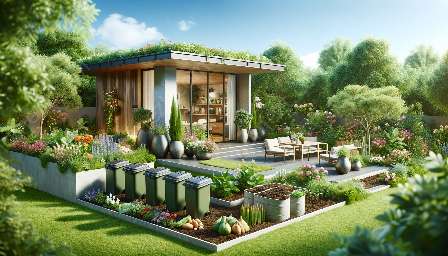Composting is a natural process that recycles organic materials into a valuable soil amendment for gardens, yards, and patios. It is an environmentally friendly way to manage organic waste and improve soil health, leading to healthier plants and a greener outdoor space.
The Benefits of Composting
Composting offers numerous benefits for your yard and patio. First and foremost, it helps reduce the amount of organic waste that ends up in landfills, thus minimizing methane emissions and reducing your carbon footprint. Additionally, using compost in your yard and patio can:
- Enhance Soil Quality: Compost enriches the soil with essential nutrients, improves its structure, and enhances its ability to retain moisture, promoting healthier plant growth.
- Support Plant Health: The beneficial microorganisms in compost aid in suppressing plant diseases and pests, leading to a more vibrant and resilient garden or patio landscape.
- Reduce the Need for Chemical Fertilizers: By providing natural nutrients to plants, compost reduces the reliance on synthetic fertilizers, contributing to a healthier and eco-friendly outdoor environment.
The Composting Process Explained
The composting process involves the decomposition of organic materials by microorganisms, earthworms, and other organisms to create a rich, dark crumbly substance known as compost. The key components necessary for the composting process are:
- Organic Matter: This can include kitchen scraps, yard trimmings, leaves, and other plant-based materials. Avoid using meat, dairy, and oily products, as they can attract pests and slow down the composting process.
- Moisture: Microorganisms need moisture to break down organic matter effectively. Aim for a damp, sponge-like consistency in your compost heap or bin.
- Air: Proper aeration is essential for the composting process, as it helps maintain aerobic conditions that support beneficial microorganisms. Turning or aerating the compost regularly ensures even decomposition.
- Temperature: Composting occurs most efficiently at temperatures between 110°F and 160°F (43°C and 71°C). At these temperatures, pathogens and weed seeds are destroyed, and decomposition proceeds rapidly.
- Microorganisms: Bacteria, fungi, and other microorganisms play a crucial role in breaking down organic matter and transforming it into compost.
The composting process can be broken down into several stages:
- Stage 1: Raw Materials Accumulation
Collect organic materials such as kitchen scraps, yard waste, leaves, and other compostable items. Avoid using materials such as diseased plants, weed seeds, and pet waste. - Stage 2: Active Composting
Combine the organic materials and create the compost pile or place them in a compost bin. Ensure adequate moisture, aeration, and the right balance of green (nitrogen-rich) and brown (carbon-rich) materials to promote decomposition. - Stage 3: Curing
Allow the compost to mature and cure for several weeks to several months, depending on the desired level of decomposition. During this stage, turning or aerating the compost helps speed up the curing process. - Stage 4: Application
Once the compost has reached a dark, crumbly texture and a rich earthy smell, it is ready to be used in your yard and patio. Apply the compost to the soil surface or mix it into the existing soil to improve fertility and structure.
Composting offers a sustainable and cost-effective way to enrich your outdoor spaces with nutrient-rich soil amendments, leading to vibrant and healthy gardens, yards, and patios. By understanding the composting process and its benefits, you can take proactive steps to care for your outdoor environment while reducing waste and contributing to a more sustainable lifestyle.


